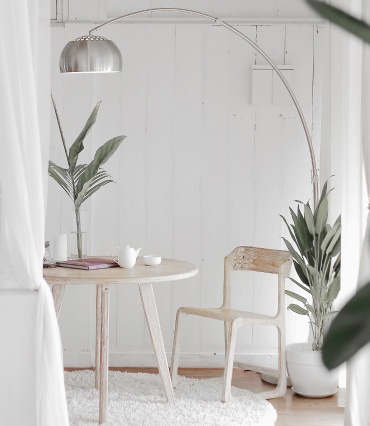There exists a chandelier for every ceiling. You don’t have to limit its use to only the living room or the dining room. Also, there is more to chandelier designs than just crystals or ornate elements. Irrespective of the décor, there are chandeliers available in umpteenth designs and styles for every home.
Here are some tips to use chandeliers in your home for maximum impact.
Keep the Room’s Size in Mind
When selecting a chandelier, it is important to keep a room’s dimensions in mind to find the perfect piece. Ideally, the chandelier’s diameter should be the same in inches as the addition of the room’s dimensions in feet. But this is a rule you can break if you want.
If you want to use only one central light in your living room, select a fixture that is prominent enough to command attention. For example, Hubbardton Forge chandeliers are handcrafted with elegant yet striking designs; enough to grab the attention and be the talking point of any setting. You can also use three lights of medium sizes in lieu of one central light. You can also use a layered look by using three chandeliers of varying heights but in the same design.
For the dining room, ensure that the size of the chandelier and the table are compatible. As a rule, the chandelier diameter should be not more than half of the table’s width. But again, the light and its arrangement must be as per your taste and not dictated by stern design rules.
Simply remember to use fixtures that fill the space between the floor or the table, and the ceiling in a way that looks appealing.
Play with Lighting Arrangements
Try different settings for chandeliers than the usual or traditional placements. For smaller living rooms, place 2-3 small-sized chandeliers in various corners instead of just one central piece. For example, hang a chandelier of not more than 22-24 inches in diameter over a corner seating arrangement in a large living room. Then hang a big piece in the same material but different design over the center table.
If your living room is medium to large in size, you can hang a chandelier between two pendant lights in the similar or contrasting styles. If you prefer contrast, one idea is to use a wrought iron chandelier with a prominent metal chain and delicate light arrangement. Then use pendants on either side in either green or blue color. Such arrangements can work with any decorative style.
You can alter the arrangement depending on the décor. For example, use crystal chandelier and pendants together in an ornate living room or dining room.
Mix Styles and Décor
It is fun to mix things up when styling your home. If you don’t want an abundance of crystal lights to complement your opulent home, use elegant chandeliers with gilded designs, delicate wires, and less use of ornaments. For example, Hubbardton Forge chandeliers are available in wonderfully extravagant designs that rival crystal fixtures but are perfect for any ornate setting.
Chandeliers are meant to be noticed. So, go all out when selecting a style for your home. Also, don’t limit them to the living room and the dining area only. Use one in the foyer, another in your bedroom, and at every corner that gives you the opportunity to light it up in fun ways. Use one in your bathroom by the vanity instead of a small pendant only. Yes, why not?
Opt for an industrial chandelier style in a modern living room setting for a different design approach. Such an arrangement can look fabulous with colorful living room furnishings. Frosted glass lights with dramatic wrought iron arrangements are perfect to create contrasts for vintage rooms and ideal matches for any contemporary décor. Delicate metal chandeliers are perfect for bathrooms as they are sturdy but also not overwhelming to use in a small space.
Remember, when it comes to chandeliers, over-the-top is not really excessive. Flamboyant chandeliers are better than fixtures that are too plain to act as the focal point of any room.

